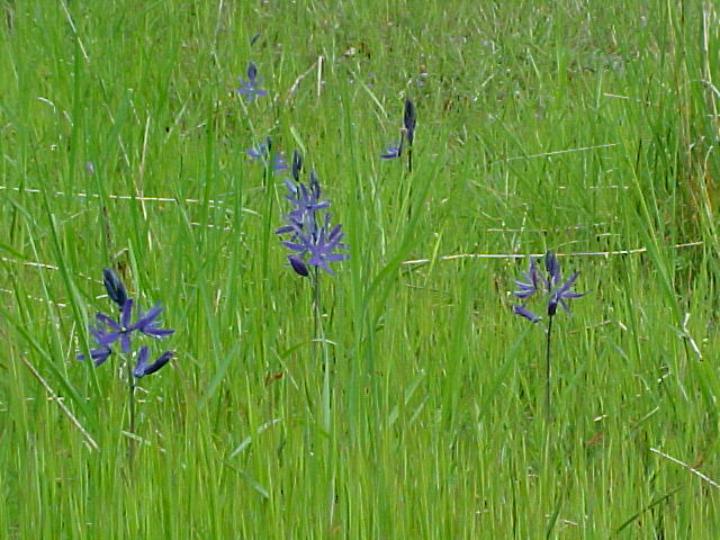Early explorers of the islands reported that the hills were covered in spring with thick lush grass, perfect for European sheep and cattle. When settlers arrived with their flocks in the 1850s, they were disappointed.
The “grass” was mainly the spring shoots of camas, brodeas, and tiny native onions—all used as food by native peoples, but not at all suitable for pasturage.
Native grasses were mainly short, tough perennials, often limited to marginal habitats such as the salt spray zone along sea bluffs — quite different than the faster growing, nitrogen rich annual grasses of Europe and Asia where sheep and cattle were domesticated.
To accommodate European livestock, Eurasian grass species were imported and widely seeded into island landscapes in the late 19th Century.
Sheep themselves quickly did the rest of the work, grazing and defecating seeds wherever they roamed. Indeed one of the most tenacious nuisance grasses in today’s wetlands and ponds, canary reed grass, was introduced into the islands a century ago as a way of growing hay in salty coastal marshes and seasonal wetlands.
Geese have recently replaced sheep as the major distributor of non-native grasses in the islands. To improve year-round hunting opportunities, wildlife agencies across the US used crossbreeding to foster non-migrating Canada goose flocks that have developed into a nuisance for owners of ponds and pastures.
Canada geese — technically a species of Brant rather than geese — are grazers, and they are happiest living on a pond surrounded by a grassy lawn or pasture. Grass seeds pass through geese undigested, so the geese “plant” new lawns wherever they go. On many of our small isolated islets, the native wildflowers have been replaced by non-native grass: goose lawns.
Unlike our disappearing native grasses, Eurasian grasses are fire tolerant; burning actually gives them a competitive advantage. Wind-blown seeds of Eurasian grasses also facilitate rapid re-colonization of clearings. Today, native species make up less than 1 percent of the grass in the islands —a nd grass is far more widespread today than it was in the days before sheep.
— Barsh and Murphy work KWIAHT Center for the Historical Ecology of the Salish Sea.




